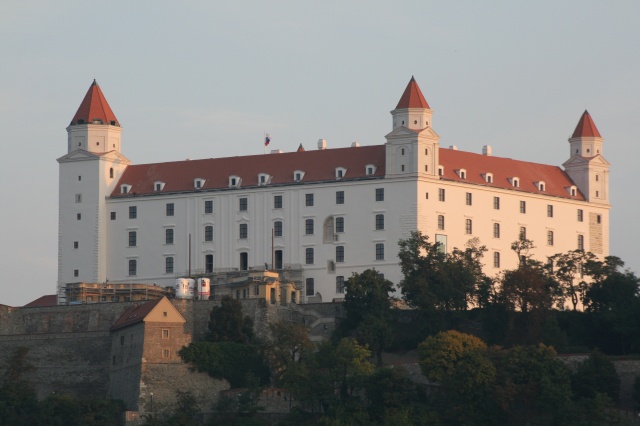FACTS ABOUT SLOVAKIA
Slovakia, a small country with amazing mountains, natural sceneries, historical towns, castles, remarkable natural sights and rich cultural heritage. In 1993 it gained independence when the former Czechoslovakia splitted to form the Czech Republic and the Slovak Republic.
Some interesting facts:
- Historical resources say that the European geographical centre is considered near the roman-catholic church of St. John the Baptist above the village of Kremnicke Bane. There is now a stone commemorating the point at 48°45′N 18°55′E as well as a hotel and a recreation centre called "Centre of Europe".
- Slovak national food speciality is made of sheep cheese and its trademark is registered within the European Union. It can be produced only in Slovakia and it is distributed under the name “slovenska bryndza”.
- Štefan Banič, a Slovak inventor, during his stay in USA in 1907-1921, constructed a prototype of a parachute and registered it in U.S. Patent Office. His patented parachute belonged to a standard equipment of U.S. pilots during the World War I.
Bratislava, a capital and the largest city in Slovakia with a population of about 500.000 people, lies on both river banks of the Danube River. The Danube River is the most important navigable Slovak river connecting the Slovak capital with two capitals of the neighbouring countries – Vienna and Budapest. Bratislava is a political, economical and cultural centre of Slovakia and the seat of the President, the Government and the Parliament.
|
|
|
|
Slovakia, even a small country, has several unique places within the world:
- The world highest wooden gothic altar is in Levoca in the St. James Church, its author is Master Paul from Levoca. He carved it from lime wood at the beginning of the 16th century and it took him 10 years to complete it.
- Kremnica Mint is the oldest enterprise in the world which operates without any break for several centuries. The coins have been made here since 1328 and the Slovak Euro-coins are punched here as well.
- The world highest sinter column is hidden in the Krasnohorská jaskyňa cave, it measures 32.6m and you can find it in the Guinness book of world records as well.
- The first technical university in the world was the Mining Academy founded by Maria Theresia and placed in Banska Stiavnica.
Worth seeing are more than 300 well preserved and reconstructed castles, impressive ruins, semi-ruins, manor houses – silent witnesses of Slovak rich history.
|
|
|
|
The High Tatras and the Low Tatras are mountain ranges with the highest peak Gerlachovsky stit forming a natural border between Slovakia and Poland. The beautiful nature together with easy access makes them a favourite destination for tourists and visitors. These mountains with their lakes, waterfalls, rare types of flowers and Tatra chamois are enchanting and unforgettable. The region gives the opportunity for mountain high hiking and climbing, wandering, walking and bicycle touring, in winter offers plenty of skiing resorts. As a matter of interest, in the western part of the High Tatras is located a peak of Kriváň, the symbol of freedom of the Slovaks.
|
|
|
Slovensky raj,the Slovak Paradise, is the most favourite Slovak national park attracting tourists by 300 km of marked trails. Crossing ravines is like an obstacle course, full of wooden or metal ladders, creepers and chains. It is near far from the historical town of Levoča and Spis Castle.
|
|
|
Slovakia has more than 4.000 caves and caverns under its mountains, but only 12 of them are open for public. UNESCO has bestowed World heritage Site status to Dobsinska Ice Cave (near Slovak paradise).
The most unusual of Slovakia’s caves is the Ochtinska Aragonit cave. In the world there are only three aragonite caves open to the public.
|
|
|
|















